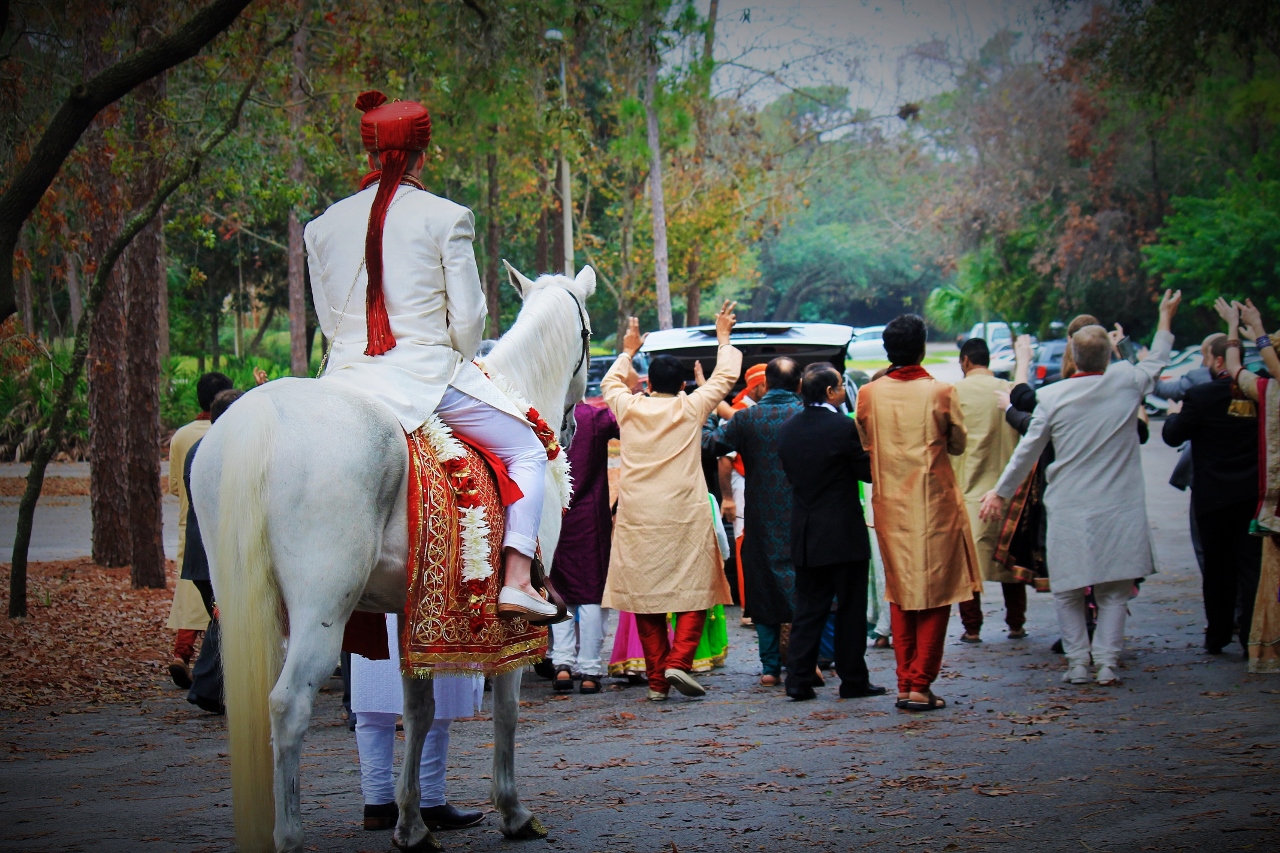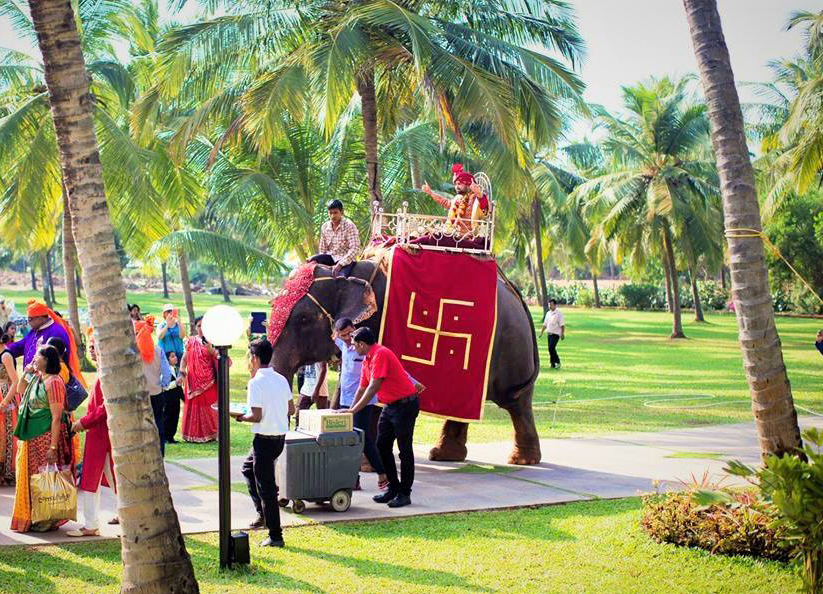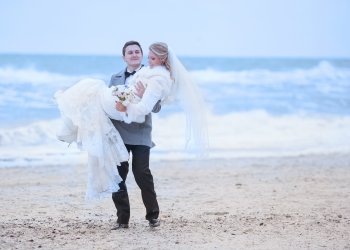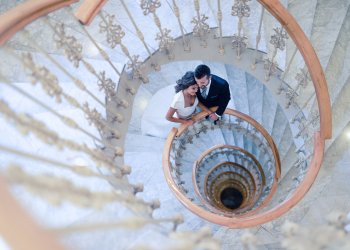The Baraat ceremony is undoubtedly one of the most fun part of an Indian wedding ceremony. It is one of those rare moments when you don’t have to follow religious rituals or to be a silent spectator; you can dance your heart out and revel in your friend’s or relative’s happiness. Baraat is not just dancing and walking to the wedding venue as we see it in movies. There is more to it; there are many details that many of us are not aware of:
Baraat Horse
The procession and the whole celebration of Baraat revolve around the horse and the groom mounting the horse. The common tradition is for the groom to enter the Wedding venue on a white horse or ‘Ghodi’. The horse will be adorned with decorations made of silk and heavy embellishments. A decorated umbrella will be placed on top of the horse. The horse will be as decorated and stunning as the groom. Although in modern versions of the Baraat, extravagant cars have replaced the horse, usually vintage cars. However, many people who still hold the tradition dear use horses as the groom’s chariot.

Baraat Elephant
The elephant is another choice for Baraat procession. Even though it is very difficult and expensive to arrange an elephant, many people still use it. In the ancient times, elephants were only used by the royals and the rich people of the society. The entry on the largest land animal clearly makes a bigger impact than a horse and renders the ceremony grand.

Baraat Music
The horse and the fandangle sure make the Baraat a visual treat, but the mood of celebration and joy is ushered with the baraat music. The upbeat Baraat music, often the Bollywood dance numbers, makes everyone walking beside the groom to dance and leap with joy. The traditional musical instruments such as Dhol are used for percussion. The modern Baraat features a fusion of Desi and International music such as Bhangra and Hip Hop; even DJs are hired to take the Baraat music to the next level and to ensure jam-packed entertainment.
The Ceremony
The Baraat is more about celebration and fun rather than religious ceremonies and rituals. The groom wears the traditional head gear or turban along with strings of flowers or pearls covering his face. All the relatives and friends would dance while approaching the venue. Close relatives will throw money on the streets to ward-off evil eyes.
When the groom and his entourage reach the venue, he will be welcomed by the bride’s family and friends. They greet the groom by applying the traditional Tilak or Vermilion on the forehead of the groom. The bride’s mother will perform an Aarti to remove the evil eyes and negativity from the groom as he is about to tie the sacred knot. The Aarti ceremony is followed by Milna, where the male relatives of the bride greet and welcome the groom. The Bride would only enter the venue once the Baraat is over and everyone is seated.
Indian weddings, all different aspects of it, ensure that every emotion is generated at a wedding venue. Baraat ceremony ensures that everyone is exhilarated and the wedding is rendered spectacular.






















